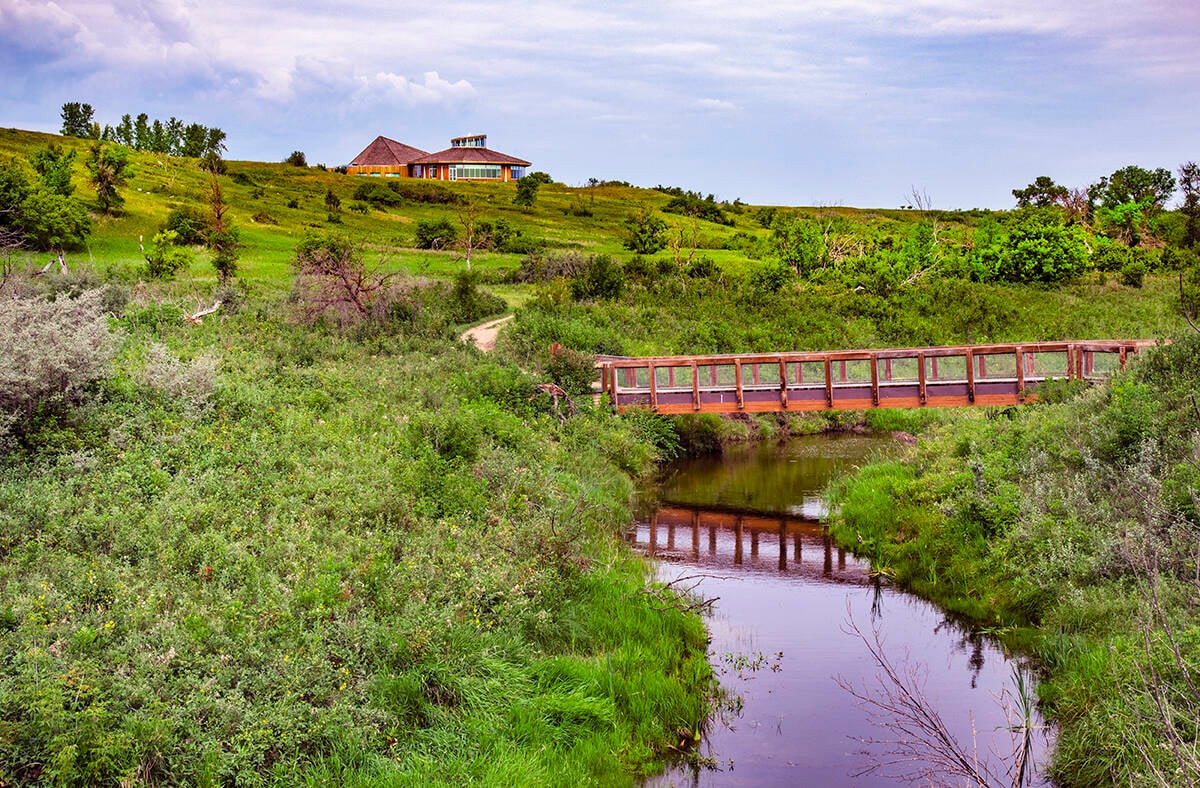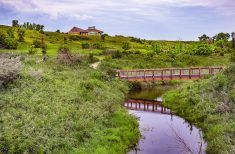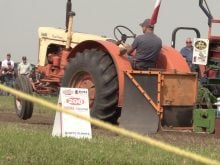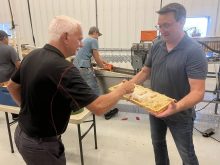MAYMONT, Sask. – Lorrie Bett was awake at 5 a.m. May 4 and had dragged her sisters out of bed so she could hit the road by 6:30.
She is in the first month of a walk to raise awareness and money for Parkinson’s disease. Bett, who has the disease, plans an 1,880 kilometre walk through central Alberta and Saskatchewan.
She left from her home at Wetaskiwin, Alta., April 16 and, walking 32 km a day down the Yellowhead highway, plans to reach her former hometown of Nipawin, Sask., before returning via a more southerly highway route by the end of June.
Read Also

Wanuskewin is on track to become Saskatchewan’s first United Nations’ designated World Heritage Site
The purpose of Wanuskewin is to advance the understanding of the evolving cultures of northern Plains Indigenous peoples, a UNESCO designation would help that goal.
Bett is accompanied by two sisters, Marlene who is driving the donated motor home and Peggy who strides with her.
Barely a year ago Bett could hardly walk. Eleven years of Parkinson’s had weakened her and caused involuntary muscle movements so that even the cane she used was not enough.
A wheelchair was in her future. Then the 54-year old had brain surgery in March 2000.
The palidotomy eliminated a lot of the body jerks and tremors and even though some symptoms returned, she is able to walk again.
Bett decided she had to let others know about her disease and the surgery that has helped. She trained this past year for her “sunshine” walk for Parkinson’s.
“It’s my way of saying thank you,” she said. “If I can help just one person with this progressive disease that’s feeling nervous or unsure, it’s all worth it.”
On Day 18 of her walk, Bett is coping with blisters. It is a problem that hit her earlier and she had to stop at a hospital to get them checked and receive antibiotics as a precaution against infection.
The other problem has been the relentless wind. It tires her out and slows her down.
Bett likes to start early in the day when her disease is less evident. As she tires, the involuntary body movement comes back.
Some people may confuse Parkinson’s, which kills brain cells that send signals to the muscles, with multiple sclerosis, which ruins the nerves so they cannot carry signals. Bett doesn’t know why she has Parkinson’s. Science isn’t sure whether it is environmental, genetic or a combination.
Bett’s break is over. She does up her sulfur yellow jacket, picks up her walking stick and pulls the baseball cap lower. Soon she has set her pace.
Semi trucks roar by throwing dust and some cars honk for her. She doesn’t look around, just ahead into the rising morning sun.
Donations for Alberta and Saskatchewan Parkinson’s foundations are accepted at CIBC bank branches and Saskatchewan credit unions.














